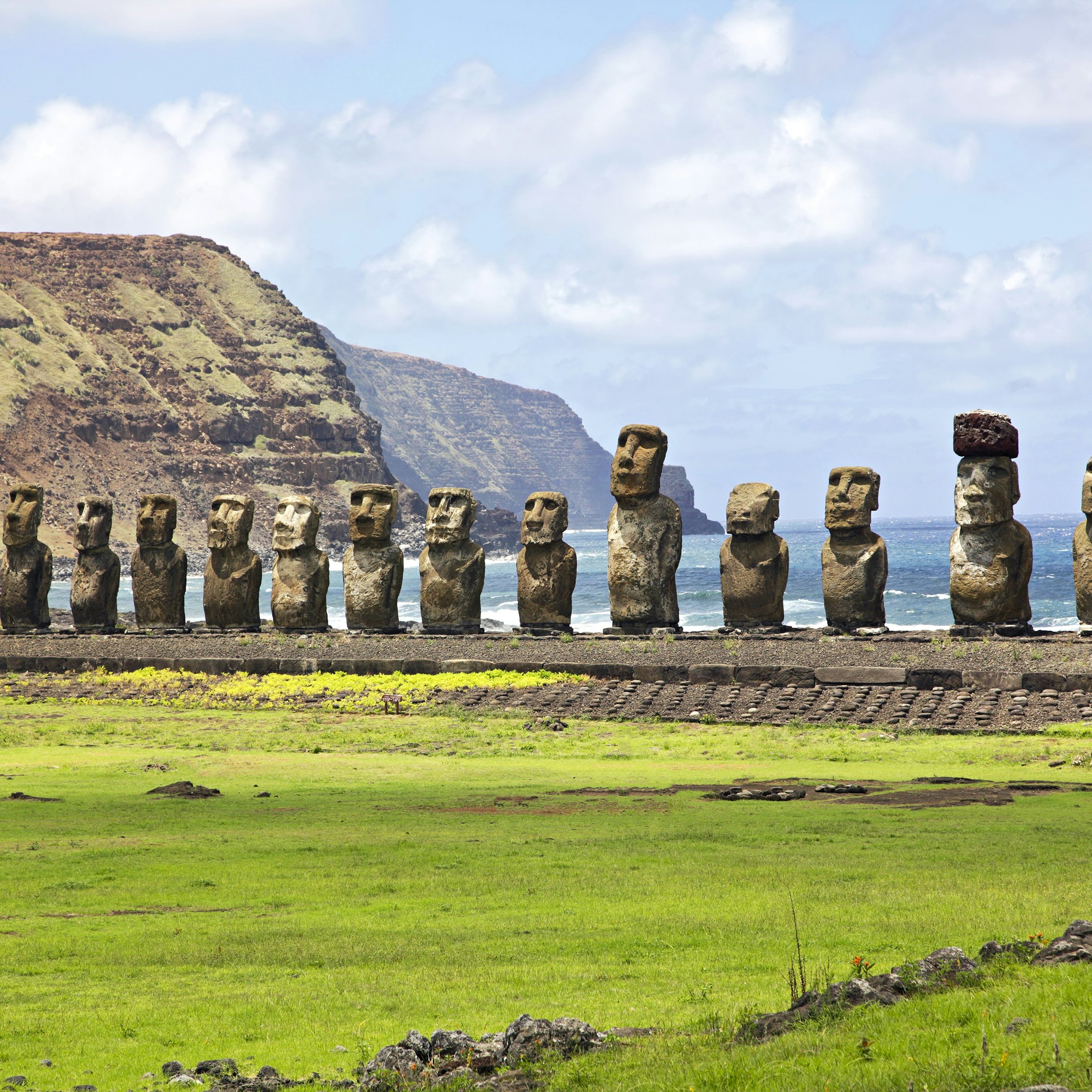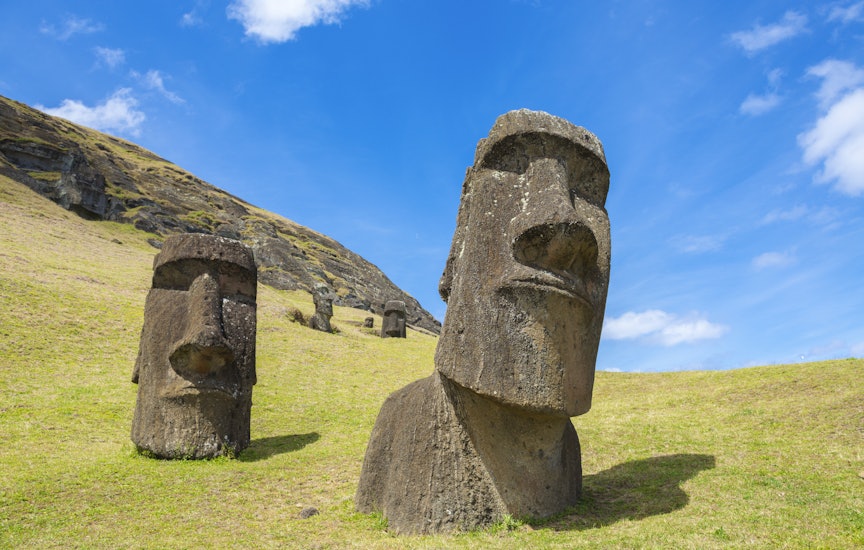

Getty Images
Overview
Few areas in the world possess a more mystical pull than this tiny speck of land, one of the most isolated places on Earth. It's hard to feel connected to Chile, over 2300 miles (3700km) to the east, let alone the wider world. Endowed with the most logic-defying statues on the planet – the strikingly familiar moai – Rapa Nui (Easter Island) emanates a magnetic, mysterious vibe.
Leave the planning to a local expert
Experience the real Rapa Nui (Easter Island). Let a local expert handle the planning for you.
Must-see attractions
Get a book. Get inspired. Get exploring.
in partnership with getyourguide















